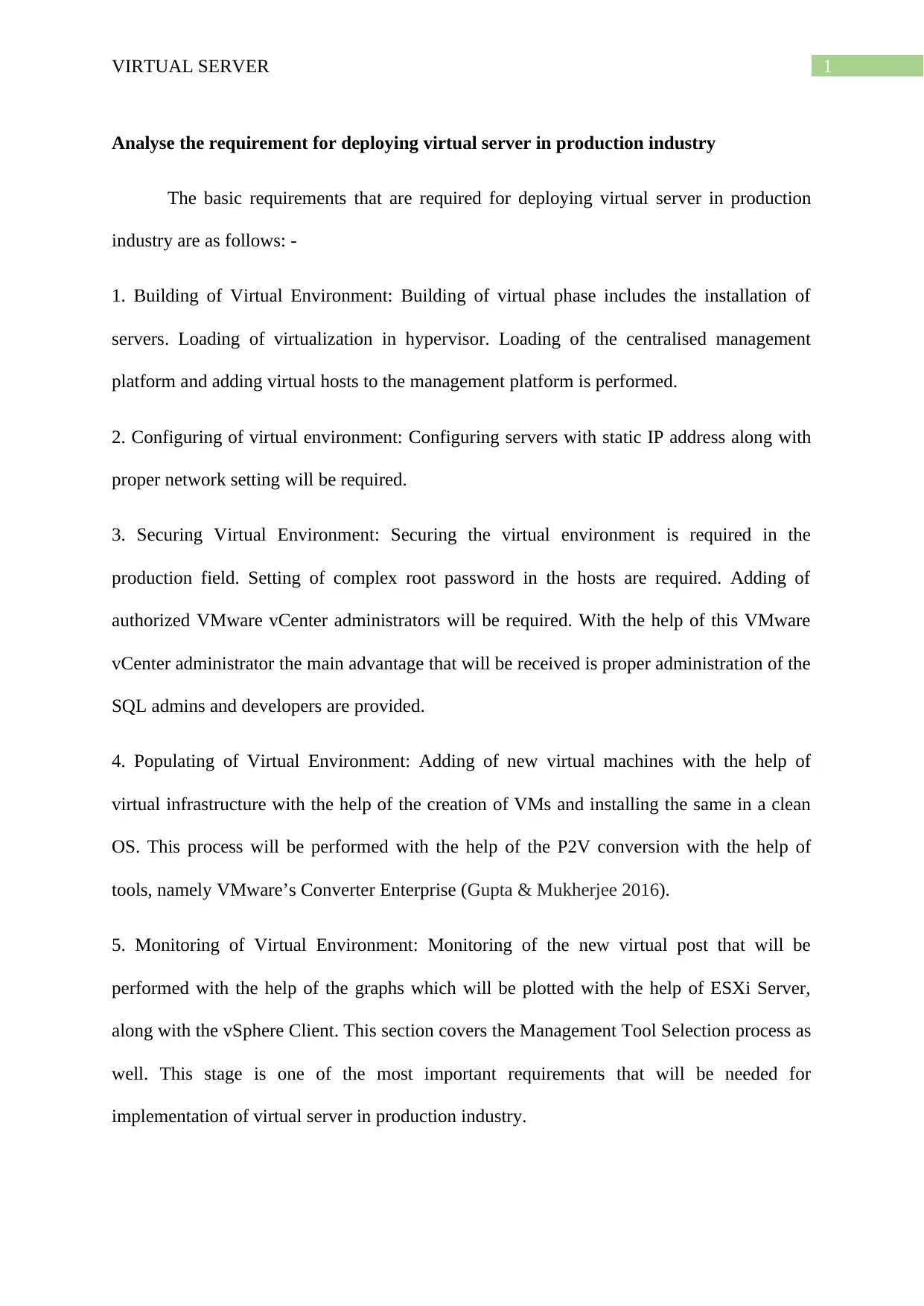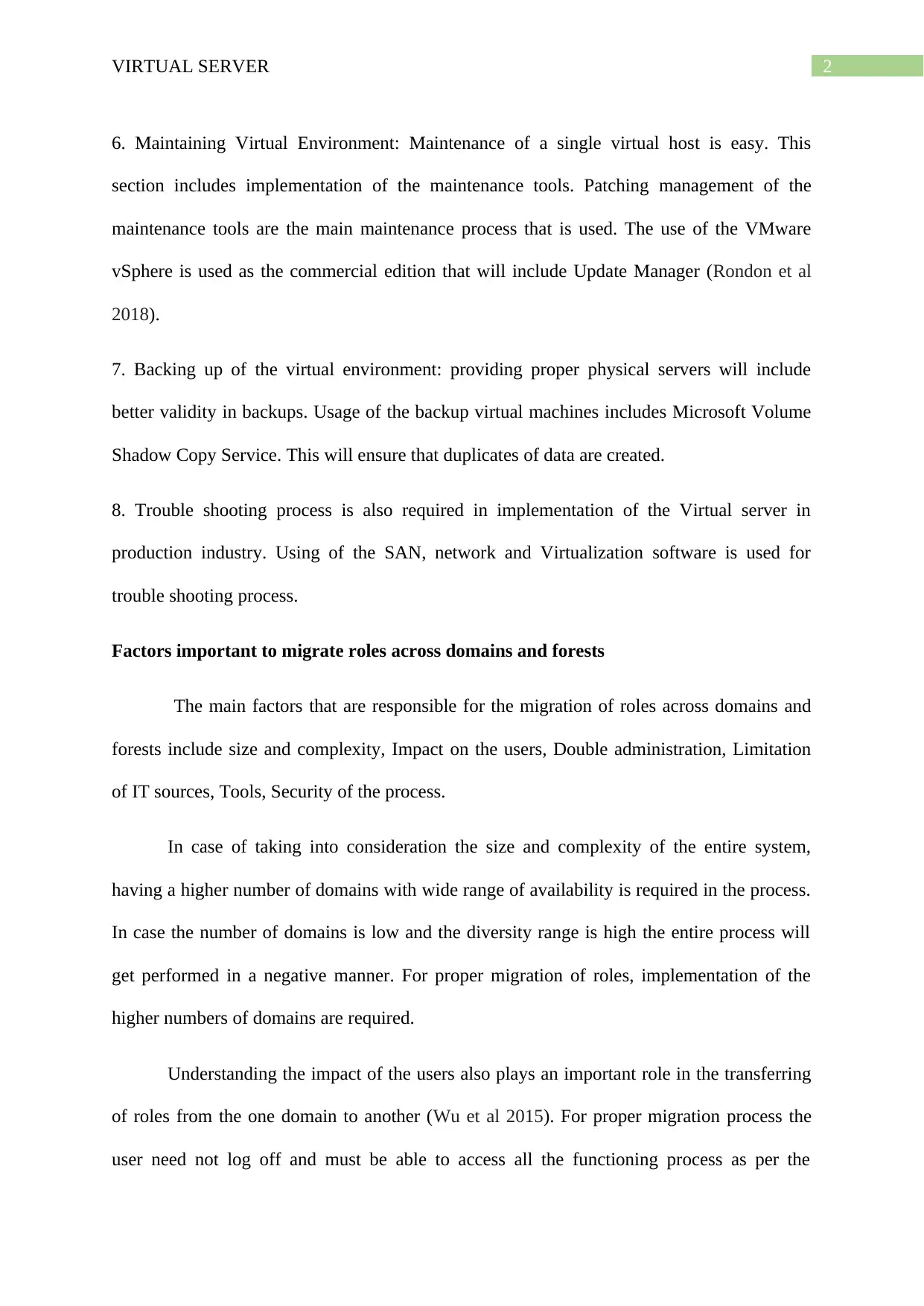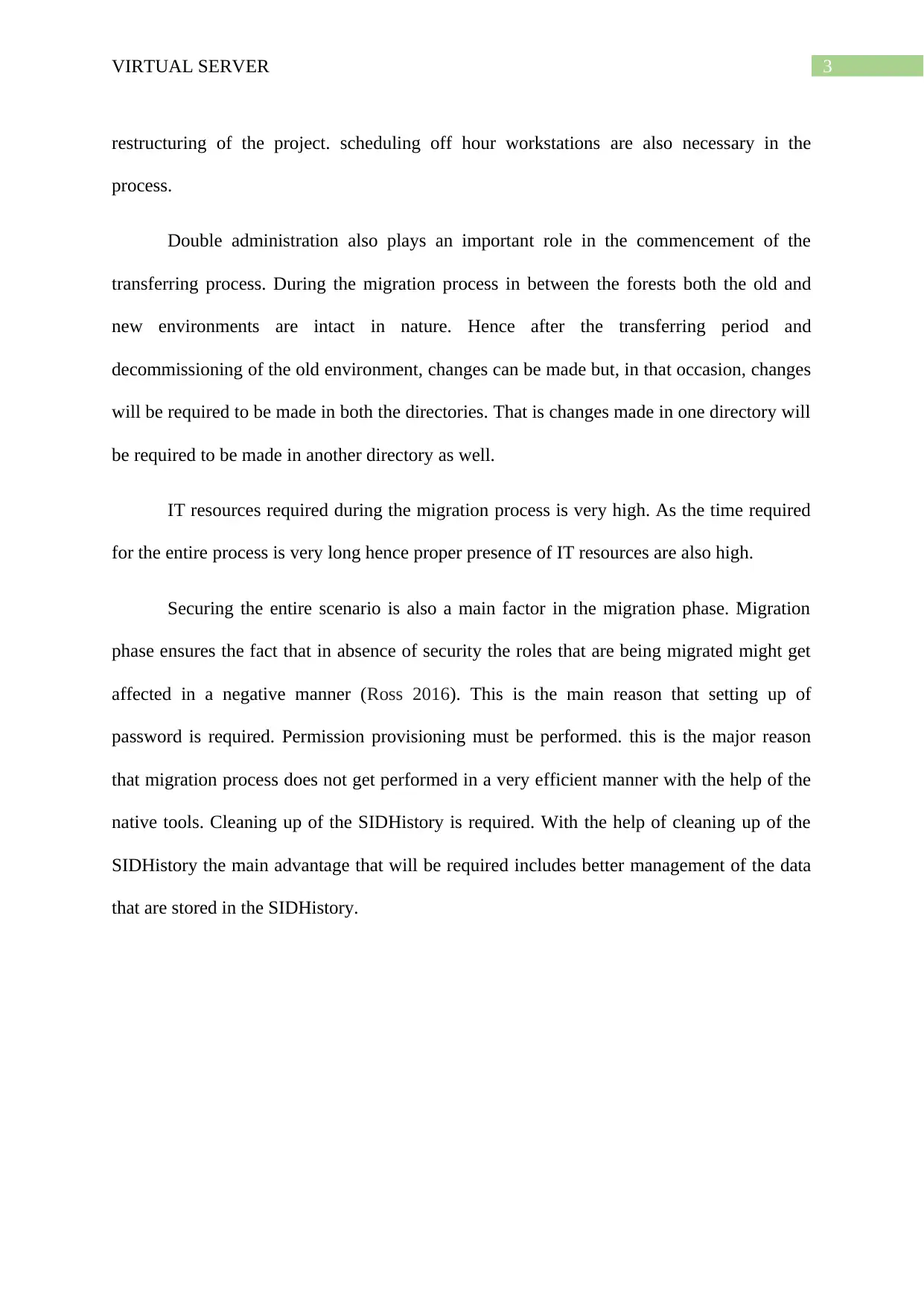Analyzing Requirements for Deploying Virtual Server in Production Industry
VerifiedAdded on 2023/04/11
|5
|962
|181
AI Summary
This document discusses the requirements for deploying a virtual server in the production industry. It covers the steps involved in building, configuring, securing, monitoring, maintaining, and backing up the virtual environment. Additionally, it explores the factors important for migrating roles across domains and forests.
Contribute Materials
Your contribution can guide someone’s learning journey. Share your
documents today.
1 out of 5











![[object Object]](/_next/static/media/star-bottom.7253800d.svg)